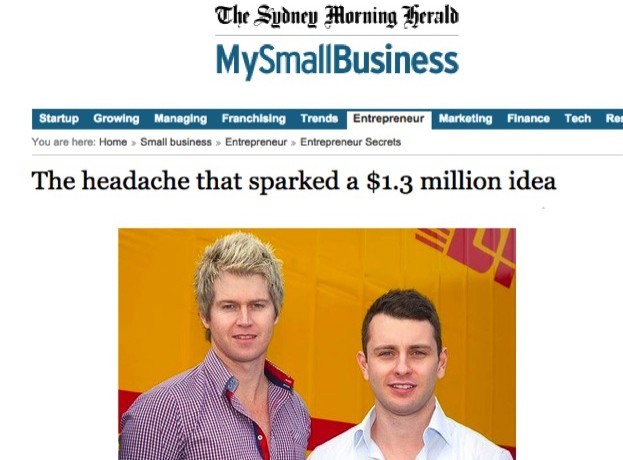 Positive media coverage is a powerful marketing tool because it positions you or your business in a favourable light by projecting the credibility, expertise, passion, and image you want to convey. Best of all, it comes from an independent source and the only cost is the time it takes to organise.
Positive media coverage is a powerful marketing tool because it positions you or your business in a favourable light by projecting the credibility, expertise, passion, and image you want to convey. Best of all, it comes from an independent source and the only cost is the time it takes to organise.
Have you or has your organisation ever featured in the media? What about your competitors? What influence did the coverage have on people’s perception of the organisation?
Securing positive media coverage is an excellent way to establish credibility. An article in which you are positioned as a key opinion leader on a relevant issue can ultimately turn your potential customers and stakeholders into advocates of your cause, whatever it may be.
What media coverage says about you or your organisation
If your organisation or business is mentioned in a respected media outlet that targets your ideal clients, it will have a much greater impact on your reputation than an advertisement in the same environment. This is because it is far more credible to people when an independent third party says good things about your business than if you say it about yourself.
When potential customers see the coverage, they generally think: “This media outlet, which understands my interests, has sought this organisation out for their opinion, advice and expertise. They could have chosen someone else in the field but they chose them.” The result is that you stand out.
Maximising your media coverage
A common mistake organisations make after receiving positive media coverage is to bask in the glory for a little while and then let it fade. If you do nothing with the coverage, you’ve missed a trick to rise above others in today’s highly competitive world.
To maximise the impact of positive media coverage, be sure to use social media platforms and more traditional forms of marketing to extend its life.
As an example, we recently secured some great media coverage for one of our not-for-profit clients. They were promoted on television, radio, newspapers, online news sites, newsletters, blogs and magazines. With so much amazing coverage, many organisations would’ve believed that was enough, but it didn’t stop there.
An example of how one of our clients, the International Institute of Home Staging, are using media coverage we have secured for them to promote their business.
The organisation took the opportunity to maximise the benefits of the coverage by sharing it online (through its e-newsletter, website and all social media platforms) to increase the reach tenfold. They also shared snippets of the coverage directly with its key members and donors and potential sponsors. This demonstrated the not-for-profit’s progress and momentum, ultimately bolstering donor advocacy.
Combining media coverage with your marketing
In addition to multiplying positive media coverage through other channels, you can also use coverage in other areas. Here are some ideas:
On your website: Have a repository of media coverage on your website so anyone who digs around for more detail can check it out. Scan print coverage and link websites and video/audio content where possible. If the coverage is behind a paywall, ask the media organisation for permission to republish relevant parts. If you have a few prestigious outlets under your belt, host a section on your home page that says: “As seen in…” with the logos or names of the outlets.
On your advertising: If an expert or a journalist has said something positive about you, your product or service, ask permission to use a quote on your advertising material or packaging. Books often have cover quotes, and theatre posters use selections from reviews to promote a show: you can do something similar.
On your collateral: Having a link to the coverage in your email signature—“Featured in…”—is unobtrusive but could prove helpful, for example, if you’re approaching a new client who wants to do some research on you. If you’re regularly featured, consider including a line or two and the media outlet’s logo on your business card.
Good media coverage is a precious event, but think of it as just the beginning of the promotional cycle. Use the momentum of positive media coverage to not only extend its reach but also extend its longevity and it will pay dividends for your brand for a while yet.
How to find the time for Media Coverage PR
One of the biggest problems businesses face when it comes to winning media coverage is that they’re simply too busy to invest the time required. Here are some ways to still get great results, without being forced to work all hours of the day.
Consider outsourcing your PR to a specialist agency. We don’t wait for big ideas, instead look for consistency in small things done well. The quest for perfection will kill any hopes of PR success dead in their tracks.
That’s why we start every PR campaign with a period of preparation that includes creating ideas and developing plans, lists, materials and resources that most agencies are brainstorming and creating on the fly as they go.
You waste a lot of time constantly thinking of what to do next. If you plan well and your time is then spent only needing to implement what you have already worked out, then you have the headspace and even time to then be agile and creative along the way.
Media Coverage can make the best of a bad situation
At Pure Public Relations, we believe that PR services should at the very least be consistent; if you pay for press coverage, you should get press coverage. That may not be the norm for the whole industry, but it is for us. We guarantee coverage, and have the skills and experience to make that happen.
Sometimes, though, the coverage comes to you, and when that happens, it can often be for all the wrong reasons. Mistakes, miscommunications, and mishaps can happen all the time in any business, big or small. It can be the result of one employee, one difficult customer, or even a random misfortune.
When that happens, we have you covered. We offer services in both training for interviews after negative coverage and urgent issues management response. Through a mix of compassion and responsibility, you’re usually able to mitigate the damage with our support. But what if you can do more?
How to gain positive media coverage from a crisis?
A good PR response to a bad situation is sometimes more than acknowledgement and apology; it’s a declaration to change ways and do more moving forward. Many corporations, when caught, will announce new initiatives or large donations to show that not only are they sorry, they’re also proactive and willing to change. Smaller businesses and not-for-profits don’t always have the same budget for grand gestures, but what you do have is the charm and authenticity of a smaller company, one that is not too big to efficiently manage and change for the better.
Rather than getting just any media coverage, we target influential media that puts you directly in front of your customers. But media relations and PR are just the beginning. We also offer media training, issues management and communication across your business.
You get a tailored PR strategy that meets your budget and your KPIs — one that doesn’t charge by the hour, the number of attempts or the number of journalists we contact. Your results come from experienced senior consultants and PR masters who mentor heads of other PR agencies. Your business gets a tailored PR strategy that fits your budget and meets your KPIs.



There are many studies that show companies who are advertising regularly and they can afford good media coverage are better placed to sell more products. People feel like they know the company if they keep seeing it on the TV, Newspapers or on other websites. So, your company gets a recommendation from the brain of your audience. Nice article, thanks.